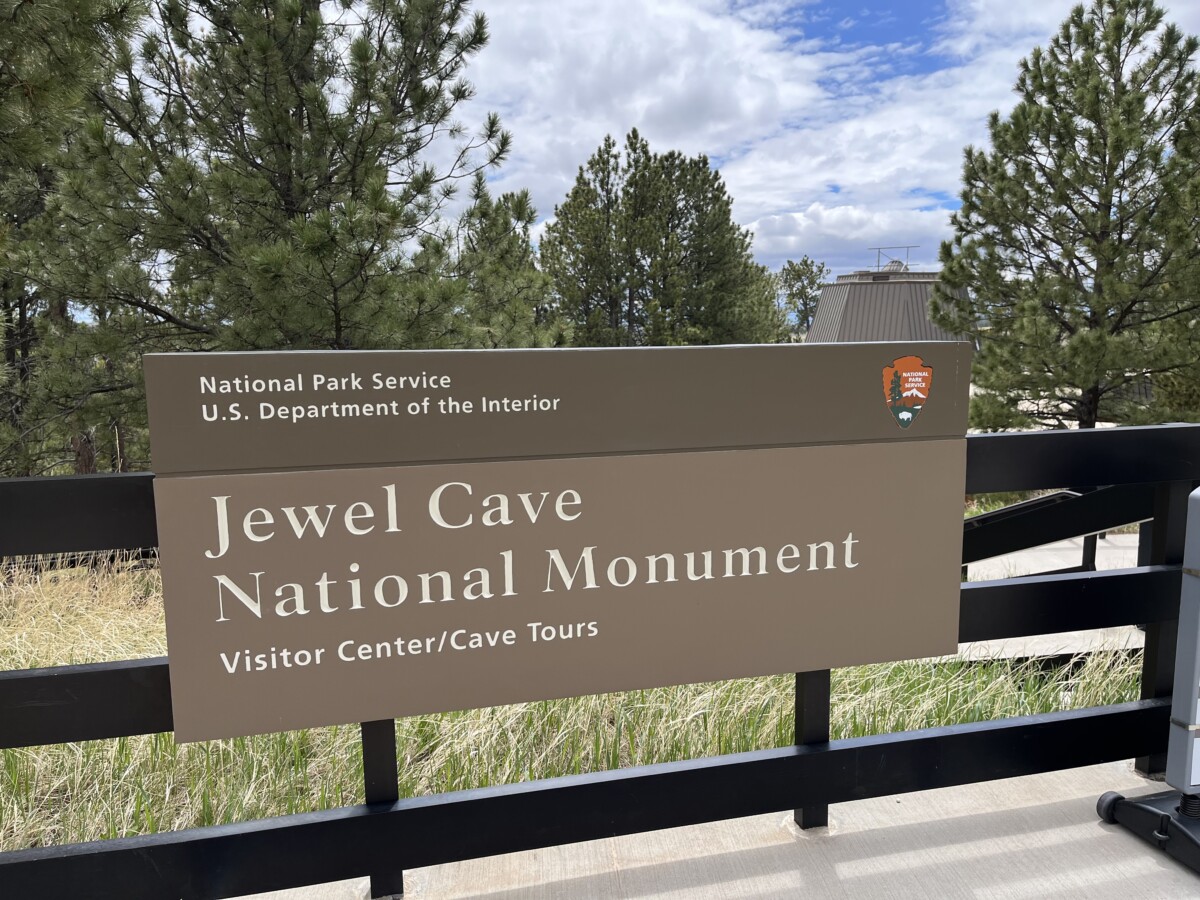It was the last day of our South Dakota trip and we had one more thing on our itinerary – Jewel Cave National Monument. Fortunately, we booked tickets ahead of time and we’re glad we did. There were no tickets available for walk-up visitors.
Jewel Cave is home to the third largest cave system in the world and the second largest in the US behind Mammoth Cave National Park. Discovered in 1900 by mining prospectors, Jewel Cave became the first national monument to protect a cave in 1908. Until the 1950s, cavers only discovered two miles of passageways. Today, explorers have mapped 215 miles of trails and still haven’t found the end.
Visitor Center and Museum
Checking in for our tour about an hour in advance, the park ranger recommended we get an overview of Jewel Cave by watching the park movie, “Discovery in the Darkness.” Located in a separate building, the film took about 25 minutes to watch.

History of Jewel Cave
In 1900, the Michaud brothers heard air blowing out of a small hole. Little did they know, they found the entrance to Jewel Cave. Just like nearby Wind Cave National Park, the barometric cave blows air in or out of the entrance to equalize pressure below the earth’s surface. Enlarging the hole with dynamite, the pair crawled inside to view rooms full of sparkling calcite crystals, hence the original name Jewel Lode Tunnel.
Geology of Jewel Cave
The film explained that Jewel Cave formed over 60 million years ago when acidic rainwater seeped below the rock layer, creating rooms and passageways. As the water drained (over millions of years), conditions inside the cave allowed calcite spars to cover the cave’s surface.
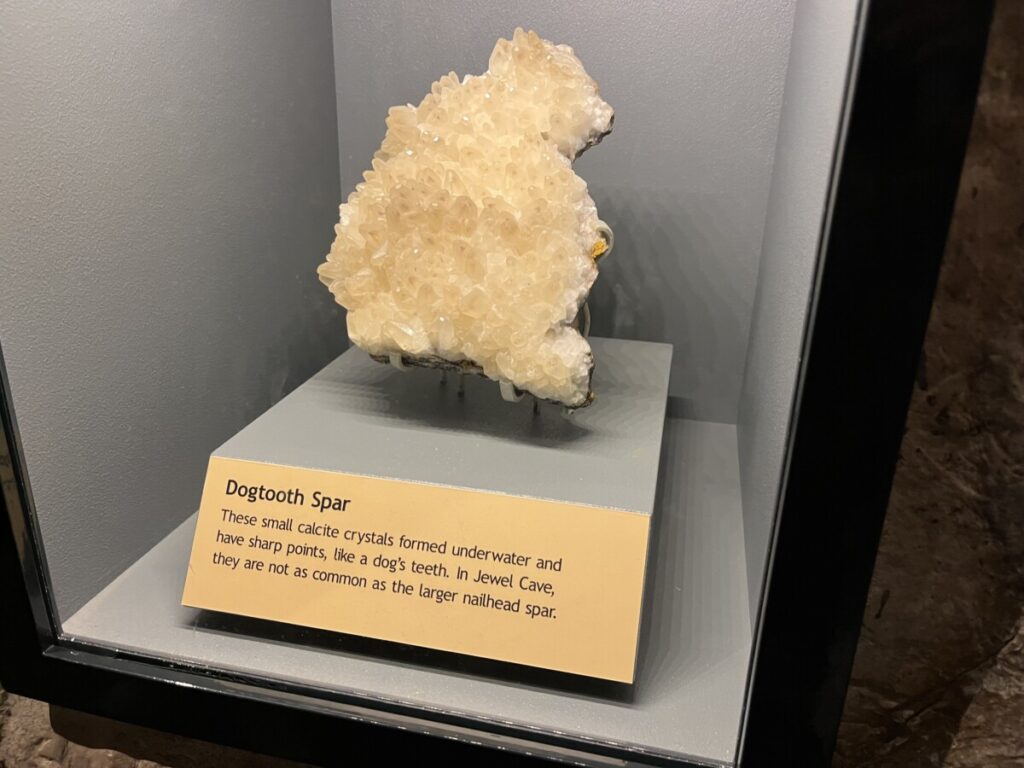

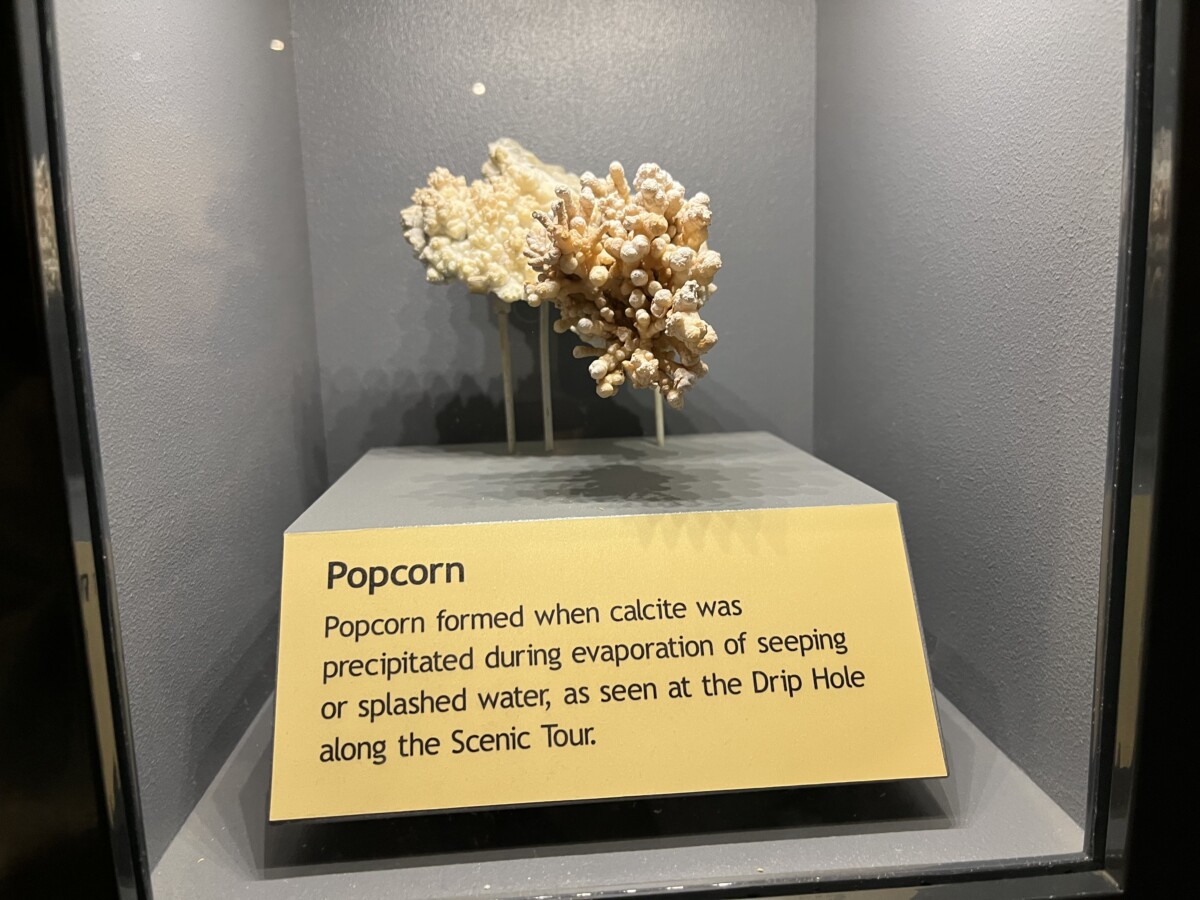
After the film, we toured the exhibit rooms inside the visitor center. Samples of Jewel Cave’s formations, such as draperies, dogtooth spar, frostwork, gypsum, and popcorn were on display with a brief description. This allowed us to know what to look for in the cave – including a 20-foot piece of drapery, called cave bacon.
Ranger Tour
As mentioned before, the only way to see Jewel Cave is by ranger-led tours. Beginning in 2019, the park suspended cave tours in order to fix the two 300-foot elevators originally built in the 1960s. Then, the pandemic hit. It was only in January 2022 that cave tours using the elevators resumed.
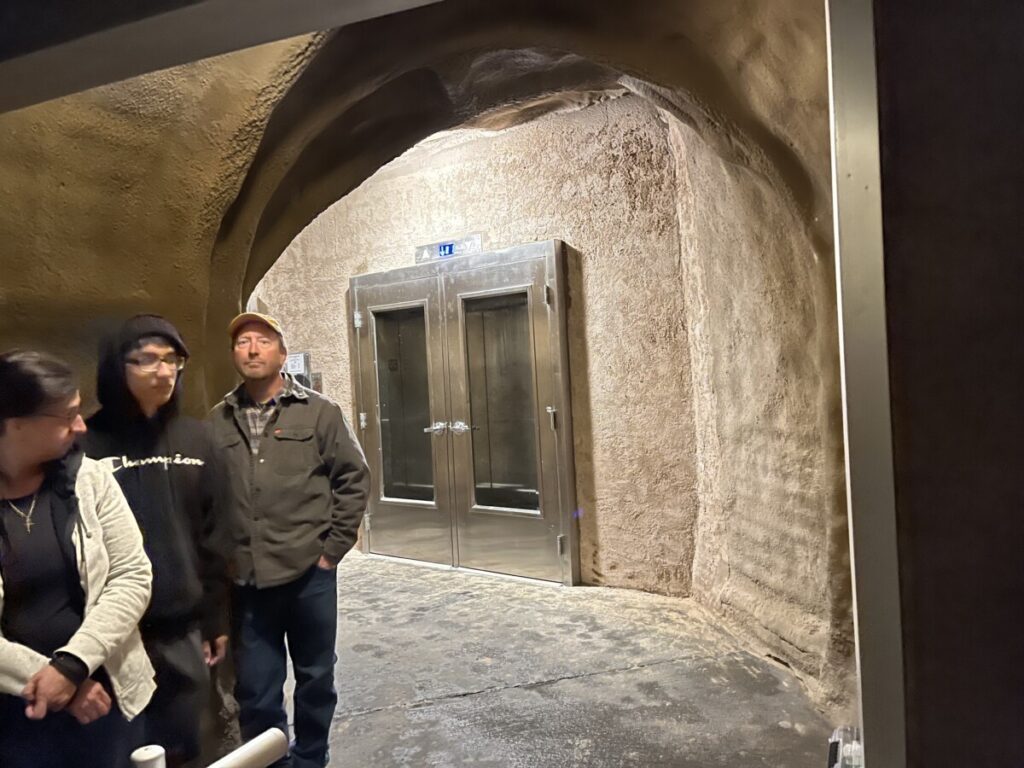
Our guide Brendan and his assistant Alison led our group of 20 into the elevators for the 80-minute Scenic Tour. Again, I can’t stress how important it is to purchase reservations online ahead of time. The reservation system is easy to navigate and when our itinerary changed a bit, we easily rescheduled our tour to a different day and time.
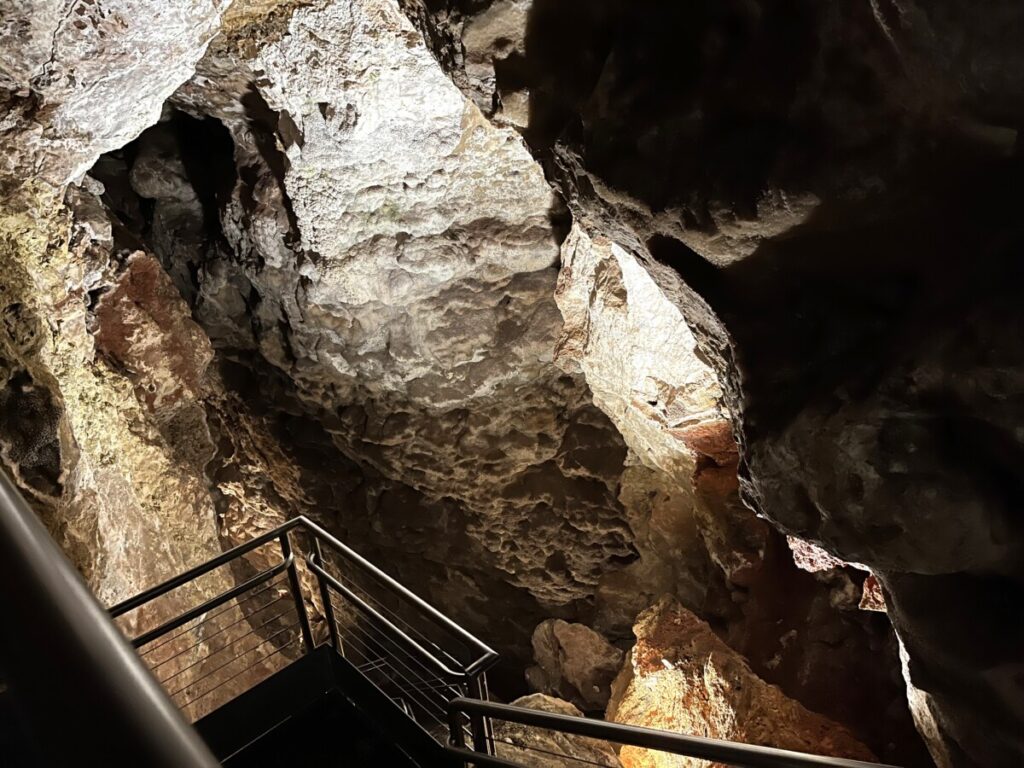
Just because we took an elevator at the beginning of the tour didn’t mean we didn’t have stairs. All in all, we climbed up and down over 700 stairs on the 0.5-mile trail. Because the guides stopped periodically to point things out, the tour didn’t feel strenuous. The weather inside the cave was cool – about 50 degrees, which matched the weather outside due to a cool front.
In one of the first rooms, Brendan pointed out calcite crystals hidden in the rocks. The cave boasts both dogtooth and nail head spar, giving the cave its name.

We continued on, stopping every so often to point out items of interest. The Formation Room boasted cave popcorn, draperies that dripped from the wall, and other speleothems.

Later in the tour, our guide turned off all the lights. We could hear dripping water, but could see nothing. I can’t imagine what it was like for the early explorers. Speaking of which, who mapped many of the miles of Jewel Cave?
The credit goes to Herb and Jan Conn. Avid rock climbers, the pair accompanied their friend, Dwight Deal to explore the cave in 1959. They found new passageways and ultimately mapped out 62 miles of trails (including the trails for the Scenic Tour) over the next few decades.
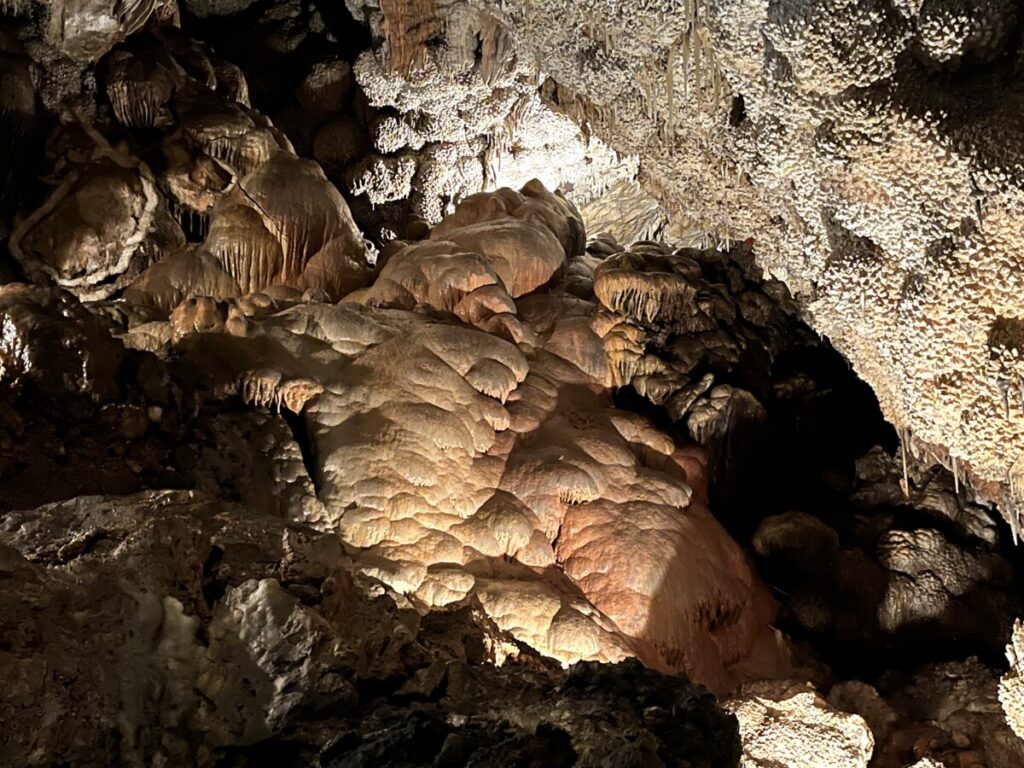
The timing proved fortuitous. During the 1940s and 1950s, many questioned Jewel Cave’s inclusion in the National Park System (NPS). Not only did tourism increase, but rare discoveries of frostwork, helictites, and underground rooms larger than Wind Cave National Park, prompted the NPS to provide additional funding for visitor services and exploration.
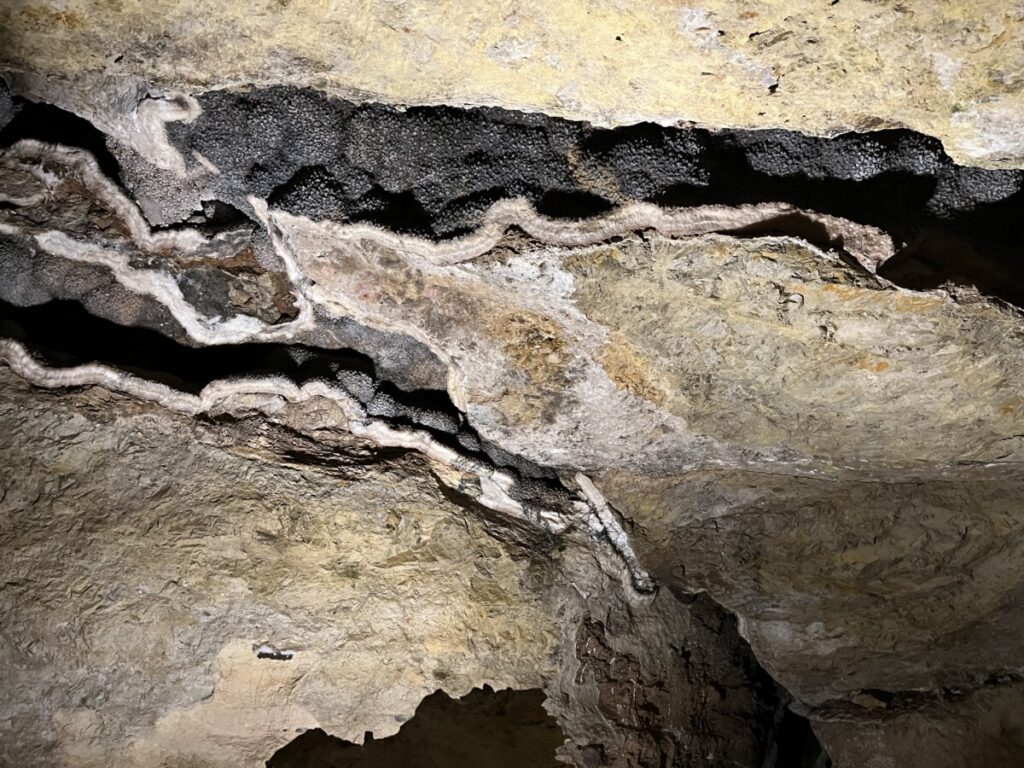
The rangers on our tour mentioned that parts of Jewel Cave remain unexplored. Some even believe that Jewel Cave may connect to Wind Cave. Others theorize Jewel Cave could be the longest cave system in the world. So why can’t explorers find the end of the cave?
The assistant ranger, Alison told us that explorers must carry in and carry out all items in a 15-pound backpack. That includes food, water, survey equipment, safety gear, and waste. Currently, trips last four days because that’s the amount of water and food they can carry.
Conclusion
If you find yourself visiting the Black Hills, Jewel Cave National Monument warrants a visit. Is it better than Wind Cave National Park?
Wind Cave has more surface area, hiking trails, and wildlife. So if you only have time to hike, go to Wind Cave. As far as the cave tour goes, I don’t have an answer. Several people on our tour also toured Wind Cave. They said Jewel Cave is much more open and has wide passageways. So if somebody is claustrophobic, I’d suggest Jewel Cave over Wind Cave.
For more information about Jewel Cave, click the NPS website here.
